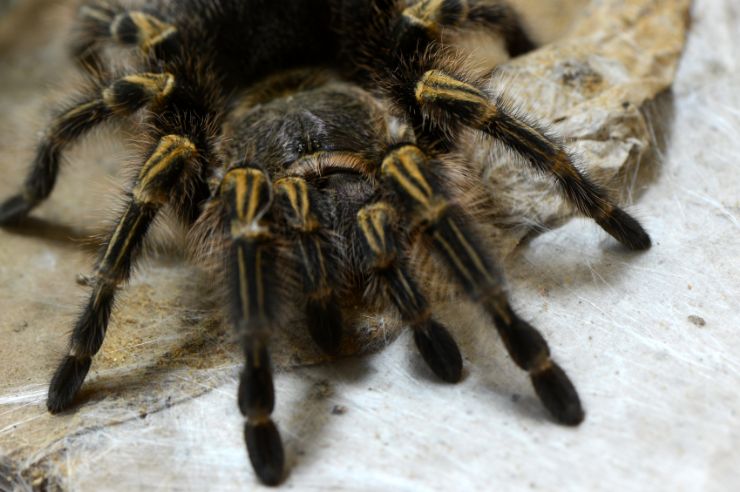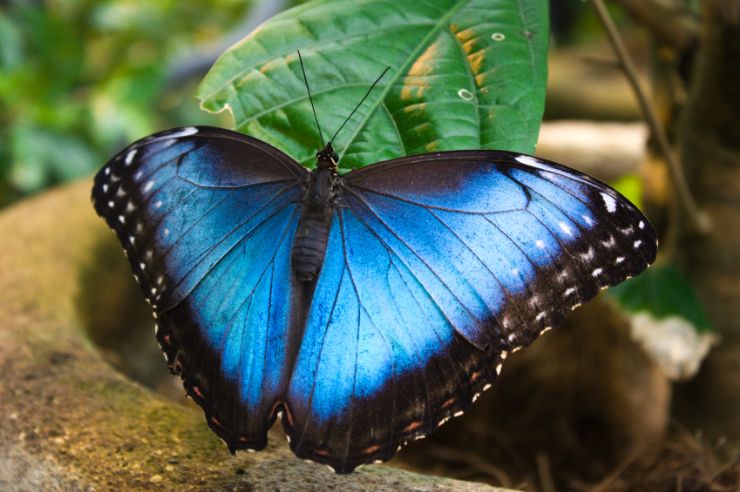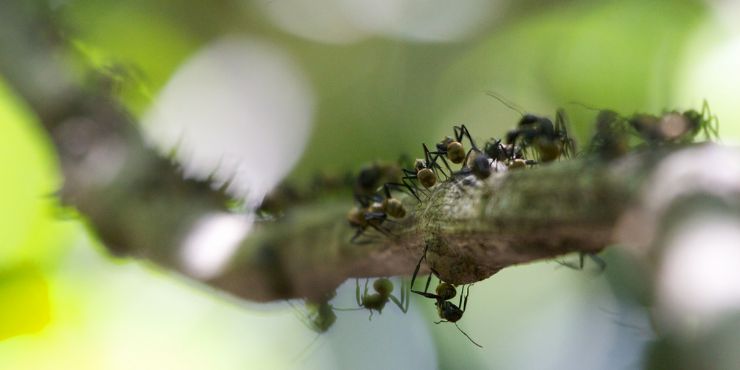Bugs…yum! I’m a tree frog in Costa Rica, so I have my choice of big, juicy, delicious bugs to snack on. You’re probably not into eating bugs as snacks, and that’s cool, but I love that I am able to find dragonflies, moths and so many more bugs during every trip through the rainforest. Because of the tropical environment in my home country, bugs are thriving and they are everywhere. Basically, every day is like a buffet for me here in Costa Rica, since there are more than 4,000 varieties of bugs for me to feast on! It’s definitely all-you-can-eat, too, and sometimes I think I overindulge. On the other hand, there are some bugs that I am sure to stay away from. They are too big for me to eat, since they are known to grow larger in tropical and sub-tropical regions. Of course, I get close sometimes so that I can study them, and I’m going to share all of my bug knowledge with you, lucky reader! Check out my overview below, because trust me, if you come here to visit, you are bound to run into at least one of these bugs – whether you think of them as beautiful creatures or creepy crawlers, you better prepare yourself. First up…beetles!

Hercules Beetle (Dynastes hercules) in Arenal National Park
1. Beetles – A Big Deal
Well, you all know that the BEATLES are a big deal, but so are Costa Rican beetles. And by “big deal” I am definitely referring to their size. These big guys are sure to cause some kind of mania – including screaming and running. Beetles in Costa Rica are hands down the winners of the Iron Throne (yes, even a tree frog watches Game of Thrones). These bugs are large and in charge, and their ruler is the Hercules beetle. This beetle, when full grown, is often the size of a human hand. That’s right! Look down at your hand right now and imagine that it is a beetle. A harmless animal, it is even sometimes kept as a pet! Some native Costa Ricans will catch a Hercules beetles and keep it in their homes, letting it live in an aquarium. Good beetle-keepers will fill up the bug’s new home with soil and mulch, all of the things that the beetle is used to. With a few few dry leaves tossed in and some bark, the beetle will feel right at home. Theses bugs eat soft fruits, like bananas and peaches. I definitely don’t recommend that Costa Rica visitors try to pet or capture one of these beetles, though.
Hercules beetles are identifiable by the large horn on their heads and their yellow carapace. They can be found in many of Costa Rica's wildlife reserves, including Arenal Volcano National Park and Tortuguero National Park. The Hercules beetle typically forages on the ground of the rainforest, looking for tasty grubs and larvae, which means sometimes we end up competing for breakfast! I’m not going to lie, most of the time I just hop away, let the beetle win, and start my search over.

Zebra Tarantula in Palo Verde National Park
7 Days / 6 Nights
Starting at $779 per person
2. Spiders – Creepers or Just Crawlers?
I’m biased, since I don’t really love spiders, so I’m going to go with creepers. Truth is, though that no tropical region would be complete without some big, hairy, creepy crawlers. I’m going to just say right away that you definitely don’t want to try to get too close to any spider you see in Costa Rica, since you can’t really be sure which are poisonous. Spiders can and do bite, though most spiders in Costa Rica aren’t going to have a fatal bite, they can have a painful bite. You have to be especially careful at the beaches and in areas with warmer temperatures. Most spiders are shy, and won’t bite unless they feel threatened, but you should still wear protective clothing that covers your feet, legs, and arms when you are hiking through the rainforests.
Spiders are known to get into homes of Ticos, and I have seen some of my friends transporting them back outside. I would probably just move it, but I’m glad that my friends are brave enough to save these spiders that are – even though I don’t like them – important to our environment.
One of the most impressive spiders in Costa Rica is the zebra tarantula – it can measure up to six inches in length! What's really amazing about these tarantulas is that they can live for up to 20 years. They make their nests deep underground in burrows to avoid the humidity and heat of the jungle. Sure, they may not be as big as the Venezuelan bird-eating spider, but if you're a little squeamish about arachnids, these guys are plenty big enough! To catch a glimpse of these remarkable spiders, head to Palo Verde National Park.

Blue Morpho Butterfly in Monteverde
3. Float Like a Butterfly
OK, after thinking about spiders, I’m ready to think about something less scary and butterflies definitely fit that bill! The giant green caterpillar is a fascinating creature – as a caterpillar it ranks as one of the largest insects in Costa Rica measuring up to eight inches in length! As if that isn’t enough, once it transforms, it becomes a beautiful blue Morpho butterfly!
It’s hard to spot these guys when they are green since they blend in with the environment, and on top of that their movements are very subtle. However, you’ll know you spotted a giant green caterpillar by the black stripes that run along the top of each section of its thorax, and the black spots that are located on either side of each segment of the caterpillar's body. The giant green caterpillar is found all over Costa Rica, including Monteverde Cloud Forest Biological Reserve and Rincón de la Vieja National Park.
 Ants walking through the rainforest, Costa RicaPhoto Credit : Matt MacGillivray
Ants walking through the rainforest, Costa RicaPhoto Credit : Matt MacGillivray4. Ants, Ants and more Ants
I couldn’t close out this article without mentioning ants. Those that live in Costa Rica know that the ants here can be an annoyance, and that they can get everywhere. Everywhere. Especially in the rainy season. These ants are one thing, and then there are the ants in the jungle. Those guys are big and aggressive, and they bite. And then there are the fire ants. Let’s just say, as an umbrella guideline, don’t mess with the ants in Costa Rica.

